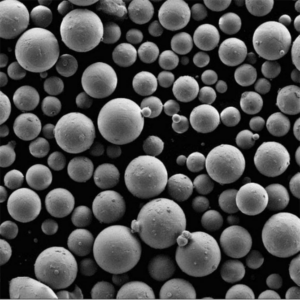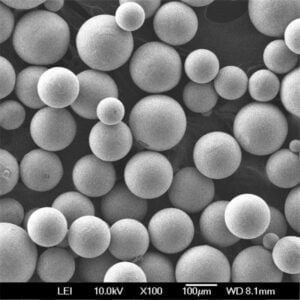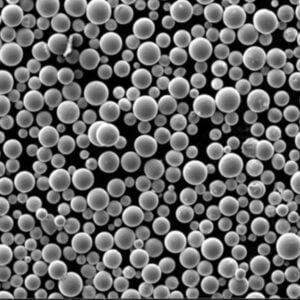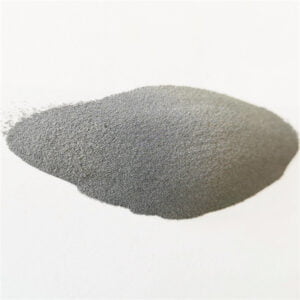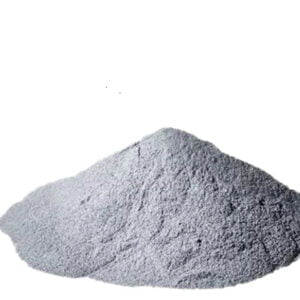Ti6Al4V Powder
Table of Contents
Overview
Ti6Al4V powder, also known as Ti-6Al-4V, Grade 5 titanium, Ti 6-4 or Ti 6/4, is a titanium alloy powder consisting of titanium, 6% aluminum and 4% vanadium. It offers an exceptional combination of high strength, low weight, corrosion resistance and biocompatibility which makes it an extremely versatile material for advanced applications in aerospace, medical devices, marine hardware and more.
Ti6Al4V is considered the workhorse of titanium alloys, accounting for over 50% of total titanium usage the world over. It has among the best strength-to-weight ratios of any metallic material and maintains its properties at extreme temperatures.
Some key properties and characteristics of Ti6Al4V powder include:
- Excellent strength-to-weight ratio, high specific strength
- Low density – 4.43 g/cm3
- High corrosion resistance
- Biocompatibility and osseointegration ability
- Good high temperature properties – usable up to 400°C with oxidation resistance up to 550°C
- High fracture toughness and fatigue strength
- Available in different size ranges and morphologies – spherical, angular
With its versatile properties, Ti6Al4V finds diverse applications across industries today.
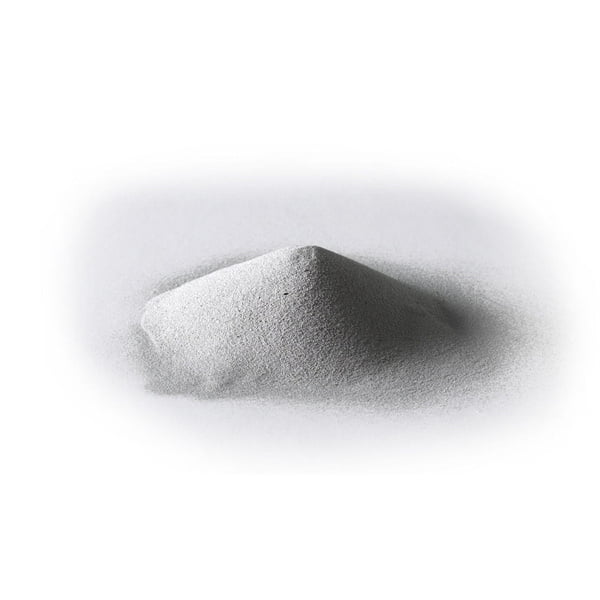
Ti6Al4V Powder Types
Ti6Al4V alloy powder is available in different size distributions, shapes and production methods to suit specific applications:
| Type | Characteristics |
|---|---|
| Gas atomized spherical | – Near spherical morphology, smooth surface – Tight particle size control – Used in AM, MIM, thermal spray |
| Plasma atomized spherical | – Highly spherical with smooth surface – Narrow size distribution – Used in AM processes |
| Hydride-dehydride (HDH) | – Irregular, angular morphology – Porous, spongy particles – Lower production cost – Used in MIM, pressing, thermal spray |
Particle Size: Available from 15 microns to 150+ microns depending on production method
Size Distribution: Graded/sieved, blended or custom specifications
Standards: ASTM B348, AMS 4943, AMS 4928, AMS 4967
Ti6Al4V Powder Composition
Ti6Al4V conforms to Aerospace Material Specification (AMS) 4928 and has the nominal composition:
| Element | Composition Range |
|---|---|
| Titanium | Balance, 87.725 – 91% |
| Aluminum | 5.5 – 6.76% |
| Vanadium | 3.5 – 4.5% |
| Iron | Max 0.30% |
| Oxygen | Max 0.20% |
| Nitrogen | Max 0.05% |
| Carbon | Max 0.08% |
| Hydrogen | Max 0.015% |
Iron, oxygen and nitrogen are commonly found impurity elements. The composition is routinely analyzed to ensure it meets aerospace grade specifications before atomization into powder.
Ti6Al4V Powder Properties
Ti6Al4V is prized for its exceptional balance of mechanical properties, corrosion resistance, lightness and biocompatibility. Its properties include:
| Physical & Mechanical Properties | Values |
|---|---|
| Density | 4.43 g/cm3 |
| Melting Point | 1604 – 1660°C |
| Ultimate Tensile Strength | 860 – 965 MPa |
| Yield Strength (0.2% offset) | 795 – 875 MPa |
| Modulus of Elasticity | 114 GPa |
| Elongation at Break | 10 – 18% |
| Hardness | 334 – 361 HV |
| Fatigue Strength (107 cycles) | 400 – 490 MPa |
| Fracture Toughness | 55 – 115 MPa-m^0.5 |
Thermal Properties
Coefficient of Thermal Expansion – 8.6 x 10-6 /K (20-100°C)
Thermal Conductivity – 7.2 W/m.K
Maximum Service Temperature – 400°C
Corrosion Resistance
Excellent corrosion resistance comparable to unalloyed titanium Resists corrosion by most acids, moist gases, organic chemicals
Formation of stable and highly adhesive oxide surface layer gives it excellent resistance to saline environments. Ti6Al4V demonstrates protection superior to stainless steel in chloride solutions due to lower oxygen and chloride diffusion rates.
-
 Ti45Nb Powder for Additive Manufacturing
Ti45Nb Powder for Additive Manufacturing -
 TiNb Alloy Powder
TiNb Alloy Powder -
 TiNbZrSn Alloy Powder
TiNbZrSn Alloy Powder -
 Ti6Al4V Powder Titanium Based Metal Powder for Additive Manufacturing
Ti6Al4V Powder Titanium Based Metal Powder for Additive Manufacturing -
 CPTi Powder
CPTi Powder -
 TC18 Powder : Unlocking the Power of Titanium Carbide
TC18 Powder : Unlocking the Power of Titanium Carbide -
 TC11 Powder : A Comprehensive Guide
TC11 Powder : A Comprehensive Guide -
 TC4 ELI Powder
TC4 ELI Powder -
 Best Ti-6Al-4V powder (TC4 Powder)for additive manufacturing
Best Ti-6Al-4V powder (TC4 Powder)for additive manufacturing
Ti6Al4V Powder Applications
Thanks to its well-balanced properties, Ti6Al4V finds diverse industrial and medical applications today:
| Industry | Applications |
|---|---|
| Aerospace | – Aircraft structural components like wings, landing gear, turbines, fasteners – Rocket motor casings, space vehicles – Helicopter rotor hub, compressor blades |
| Medical & Dental | – Orthopedic implants – hip, knee joints – Dental implants, fixtures, crowns – Maxillofacial implants – Surgical instruments |
| Automotive | – Connecting rods, drive shafts, springs – Racing car parts like valves, pistons – Exhaust components |
| Chemical | – Heat exchangers, tanks, pipes carrying corrosive media – Valves, condensers, distillation columns – Pumps and housings |
| Power & Energy | – Steam and gas turbine components – Structural parts for reactors – Renewables -high performance offshore |
| Marine | – Propellers, connecting rods – Corrosion resistant fasteners, hinges – Desalination equipment |
Additive manufacturing is expanding the applications for titanium alloys in all these sectors by enabling freeform geometries not possible previously.
Ti6Al4V Powder Specifications
| Standard | Description |
|---|---|
| ASTM B348 | Standard specification for titanium and titanium alloy bars and billets |
| AMS 4928 | Aerospace material specification for titanium alloy sheet, strip and plate 6Al – 4V annealed |
| AMS 4943 | Chemical check analysis limits for titanium and titanium alloys |
| AMS 4967 | Aerospace material specification for powder, titanium alloy 6Al-4V |
| ISO 21388 | Specification for unalloyed titanium for surgical implant applications |
| ASME SB-348 | Specification for titanium and titanium alloy bars and billets |
Titanium grade 5 Eli powder also needs to meet additional customer requirements pertaining to:
- Particle shape
- Flowability
- Apparent density
- Tap density
- Pycnometer density
- Chemical analysis
- Mechanical properties
Manufacturers producing Ti6Al4V powder follow certified quality management systems and testing protocols before supplying to customers across defense, aerospace, energy, motorsports and medical sectors among others.
Ti6Al4V Powder Suppliers
Ti6Al4V powder is manufactured via gas atomization or plasma atomization to produce spherical powder suitable for AM. The starting raw material is vacuum arc remelted (VAR) or electron beam melted (EBM) alloy slab which is atomized into fine droplets that solidify into powder particles on rapid cooling.
Key global suppliers of Ti6Al4V spherical and pre-alloyed powders are:
| Company | Country |
|---|---|
| AP&C | Canada |
| ATI Powder Metals | USA |
| TLS Technik GmbH | Germany |
| GKN Hoeganaes | USA |
| Tekna Advanced Materials | USA |
| Slm Solutions | Germany |
| Erasteel | France |
Ti6Al4V powder can be procured in small quantities for research and prototyping applications. Custom alloys and particle characteristics are also possible for companies with established supply agreements.
Pricing:
As a high performance alloy requiring advanced manufacturing, Ti6Al4V powder commands a premium over standard grades of titanium and other metal powders. Pricing varies from $100/kg to $500/kg based on:
- Order quantity
- Particle shape and size distribution
- Customization of chemistry/mechanical properties
- Testing and certification requirements
- Economic factors – supply-demand dynamics, raw material costs
Higher purity grades used in medical devices and aerospace applications are costlier. Costs have seen a declining trend with ramp up in production capacities globally.
How to Choose Ti6Al4V Powder
Selection of appropriate Ti6Al4V powder depends upon your specific application and process requirements. Some key considerations include:
Additive Manufacturing
- Particle shape – spherical/shaped distributions for better flow and packing
- Particle size – fine <45 microns for better resolution and surface finish
- Narrow size range – ensures uniform melting and densification
- High powder purity >99.5% titanium for lower contamination
- Low oxygen, nitrogen and carbon content
Metal Injection Molding (MIM)
- Irregular, angular powder for higher green strength
- Medium particle size – 100 mesh
- Powder blend with binder components
- Economic grade meeting cost targets
Thermal Spray
- Particle size suitable for spray process
- Porous HDH hydride powder allows better coating bonding
- Custom alloy development possible
Powder Metallurgy
- Angular, porous powder for compaction
- Powder blend tailored to application
- Alloy modified for sintering response
Do consult powder producers early in the design process to select the optimum powder suited for your specific component requirements.
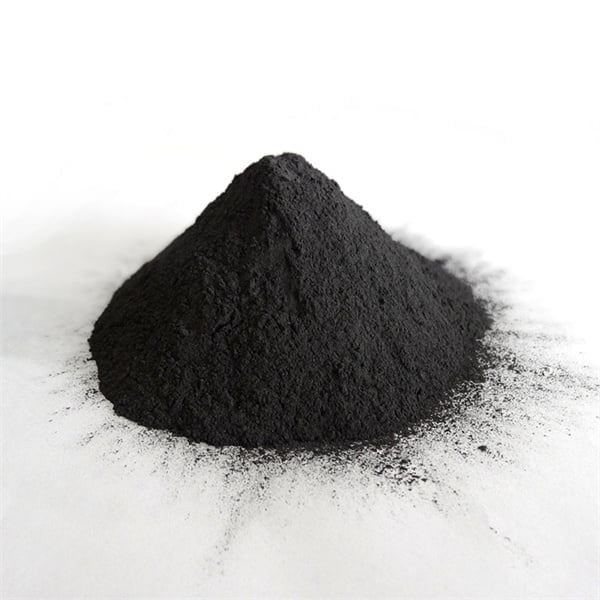
Advantages and Limitations of Ti6Al4V Powder
Advantages
- High strength to weight ratio
- Retains properties at elevated temperatures
- Excellent corrosion resistance
- Bioinert – does not produce adverse reactions when implanted
- Powder feedstock allows complex, net-shape part fabrication via AM
- Tailorable mechanical properties by heat treatment
- Recyclable to minimize wastage
Limitations
- High material cost compared to steels and aluminum alloys
- Requires high processing temperatures oxygen contamination risk
- Lower stiffness than steel
- Sharp notch sensitivity – cracking risk
- Difficult to machine requiring special tooling
Engineers select Ti6Al4V where strength, temperature resistance, biocompatibility and corrosion resistance needs outweigh cost constraints in critical structural parts.
Ti6Al4V Powder vs. Alternatives
Ti6Al4V competes against stainless steels, cobalt chromium alloys, aluminum grades and pure titanium. Comparison on key parameters is highlighted below:
| Ti6Al4V | Stainless Steel 316L | CoCrMo Alloy | Al 6061 | Pure Ti Grade 2 | |
|---|---|---|---|---|---|
| Yield Strength | 860 MPa | 290 MPa | 655 MPa | 55 MPa | 370 MPa |
| Density | 4.43 g/cc | 8 g/cc | 8.3 g/cc | 2.7 g/cc | 4.51 g/cc |
| Young’s Modulus | 114 GPa | 193 GPa | 230 GPa | 69 GPa | 105 GPa |
| Thermal Conductivity | 7 W/mK | 12 W/mK | 9 W/mK | 180 W/mK | 7 W/mK |
| Melting Point | 1640°C | 1375°C | 1350°C | 650°C | 1668°C |
| Corrosion Resistance | Excellent | Good | Fair | Good | Excellent |
| Cost Comparison | 10x vs Al, 4x vs Steel | Lower cost base | 2x cost vs steel | Lowest cost | 8x cost vs Ti grade 2 |
Share On
MET3DP Technology Co., LTD is a leading provider of additive manufacturing solutions headquartered in Qingdao, China. Our company specializes in 3D printing equipment and high-performance metal powders for industrial applications.
Inquiry to get best price and customized Solution for your business!
Related Articles
About Met3DP
Recent Update
Our Product
CONTACT US
Any questions? Send us message now! We’ll serve your request with a whole team after receiving your message.

Metal Powders for 3D Printing and Additive Manufacturing
COMPANY
PRODUCT
cONTACT INFO
- Qingdao City, Shandong, China
- [email protected]
- [email protected]
- +86 19116340731






